God willing, a meeting of the committee for community and environmental development will hold on Monday, September 11, 2023 at 11:00 AM
In the office of Vice Dean for Community Services and Environmental Development Affairs.

 Do you have any questions? (088) 2080369 - 2345622 Pharmacy_QAAU@pharm.aun.edu.eg
Do you have any questions? (088) 2080369 - 2345622 Pharmacy_QAAU@pharm.aun.edu.eg
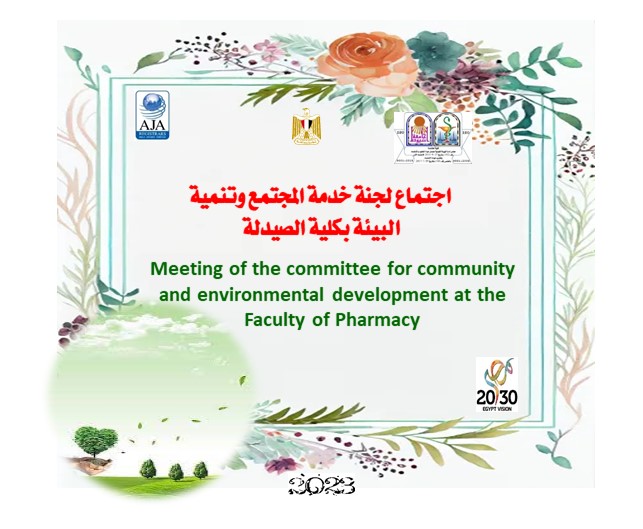
God willing, a meeting of the committee for community and environmental development will hold on Monday, September 11, 2023 at 11:00 AM
In the office of Vice Dean for Community Services and Environmental Development Affairs.
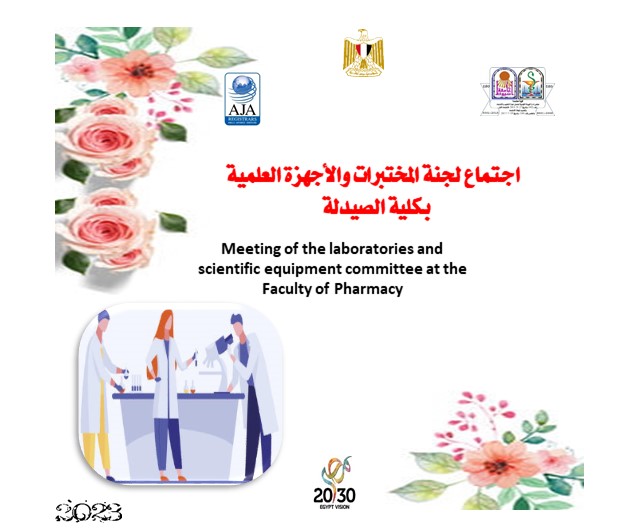
God willing, the laboratories and scientific equipment committee will hold its meeting on Monday, September 11, 2023 at twelve (noon)
in the office of Vice Dean for Community Services and Environmental Development Affairs.

(Prof. Ahmed Mohamed Abdel Mawla)
Several infuenza pandemics have impacted our life, each with variable prevalence and severity. In a search for natural
antivirals, further phytochemical investigation of Gardenia latifolia Aiton, Rubiaceae, was conducted. As a result, fve
structurally diverse glycosides were isolated, ofering valuable chemotaxonomic data. Using the crystal violet technique,
three isolates, canthoside C, (6R,7S,8S)-7α-[(β-d-glucopyranosyl) oxy] lyoniresinol, and ecdysanrosin A, were evaluated
for their anti-infuenza A (H1N1) activities. Based on previously reported anti-infammatory activity of the guaiane class,
we investigated the inhibitory efect of (1R,7R,8S,10R)-7,8,11-trihydroxy-guai-4-ene-3-one 8-O-β-d-glucopyranoside, a
rare guaiane sesquiterpene glucoside, on inducible nitric oxide (NO) production by Griess assay. Regarding antiviral assay,
canthoside C was the most active. It considerably inhibited H1N1 infectivity at an IC50 value of 10.93 µg/ml, showing a
selectivity index (SI) of 12.88, compared with acyclovir as a standard. Besides, ecdysanrosin A displayed a moderate selective
antiviral activity with an IC50 value of 28.03 µg/ml. Considering their low cytotoxicity on the host cells, canthoside C and
ecdysanrosin A have additional merit as potential antiviral agents. Despite the claimed anti-infammatory activity of guaianes,
(1R,7R,8S,10R)-7,8,11-trihydroxy-guai-4-ene-3-one 8-O-β-d-glucopyranoside showed a limited anti-infammatory activity
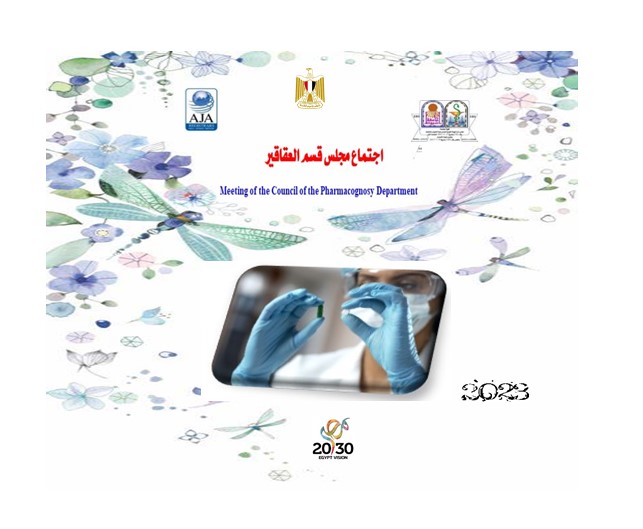
God willing, The Pharmacognosy Department Council will hold its regular monthly meeting number (36) on Wednesday, September 6, 2023 at eleven (AM).
in the department board meeting room.

God willing, the meeting of the Pharmaceutics Department Board of the Faculty of Pharmacy No. (517) This will be on Monday, September 4, 2023, at 10:00 AM.
In the department council meeting room on the third floor
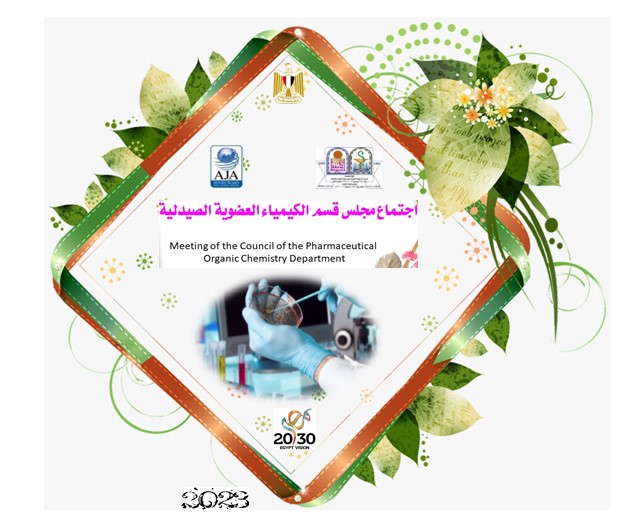
God willing, the Pharmaceutical Organic Chemistry Department Council will hold its regular monthly meeting number (465) On Wednesday, September 6, 2023 at 11:00 in the morning
In the department council meeting room.
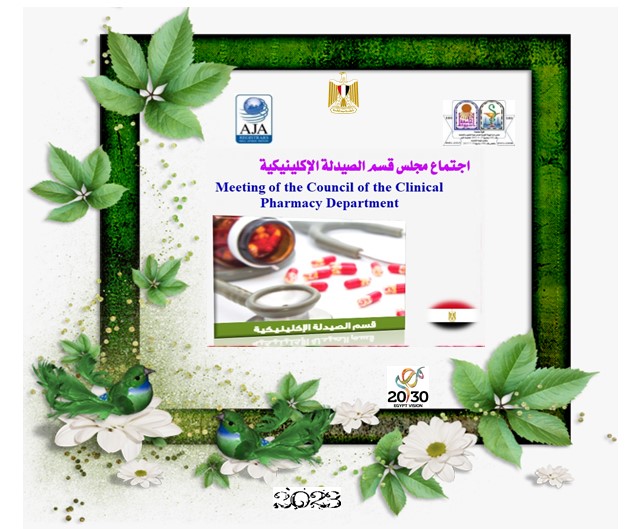
God willing, the Clinical Pharmacy Department Council will hold its regular monthly meeting number (93) on Tuesday, September 5, 2023, at twelve noonin
the meetings Hall of the Department - 5th floor (Building A)
In the department council meeting room
Skin damage exposes the underlying layers to bacterial invasion, leading to skin and soft tissue infections. Several pathogens have developed resistance against conventional topical antimicrobial treatments and rendered them less effective. Recently, several nanomedical strategies have emerged as a potential approach to improve therapeutic outcomes of treating bacterial skin infections. In the current study, nanofibers were utilized for topical delivery of the antimicrobial drug vancomycin and evaluated as a promising tool for treatment of topical skin infections. Vancomycin-loaded nanofibers were prepared via electrospinning technique, and vancomycin-loaded nanofibers of the optimal composition exhibited nanosized uniform smooth fibers (ca. 200 nm diameter), high drug entrapment efficiency and sustained drug release patterns over 48 h. In vitro cytotoxicity assays, using several cell lines, revealed the biocompatibility of the drug-loaded nanofibers. In vitro antibacterial studies showed sustained antibacterial activity of the vancomycin-loaded nanofibers against methicillin-resistant Staphylococcus aureus (MRSA), in comparison to the free drug. The nanofibers were then tested in animal model of superficial MRSA skin infection and demonstrated a superior antibacterial efficiency, as compared to animals treated with the free vancomycin solution. Hence, nanofibers might provide an efficient nanodevice to overcome MRSA-induced skin infections and a promising topical delivery vehicle for antimicrobial drugs.

